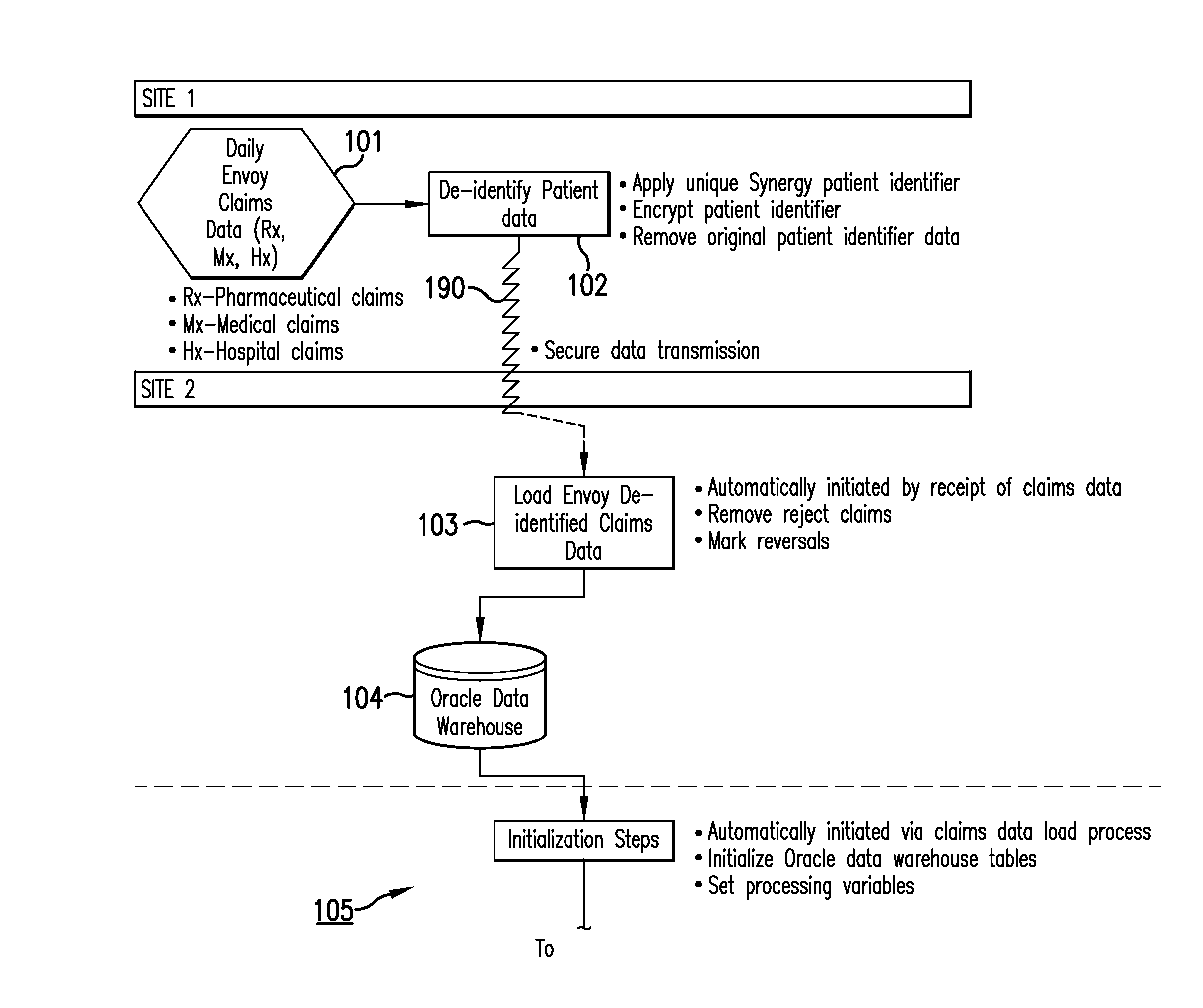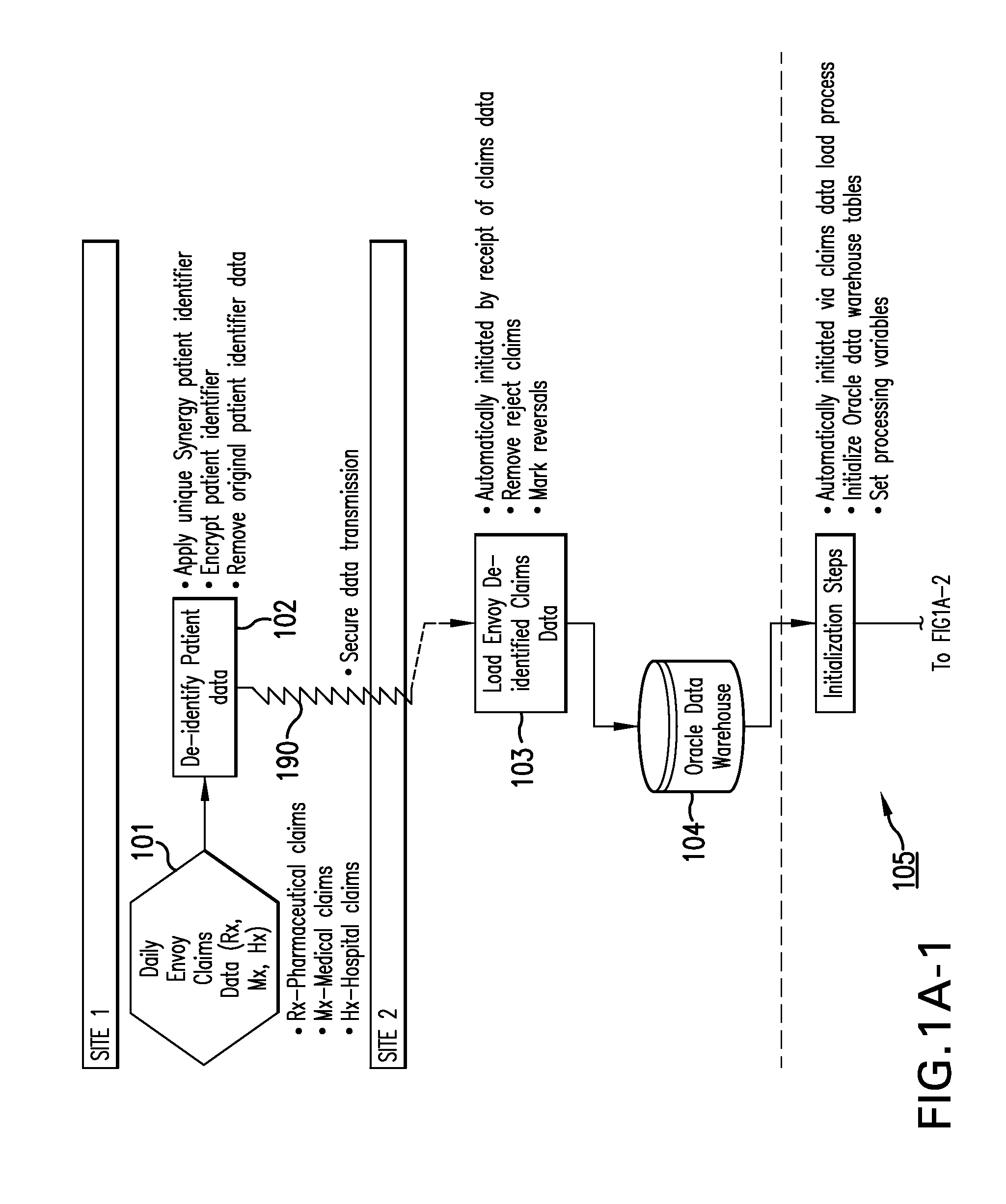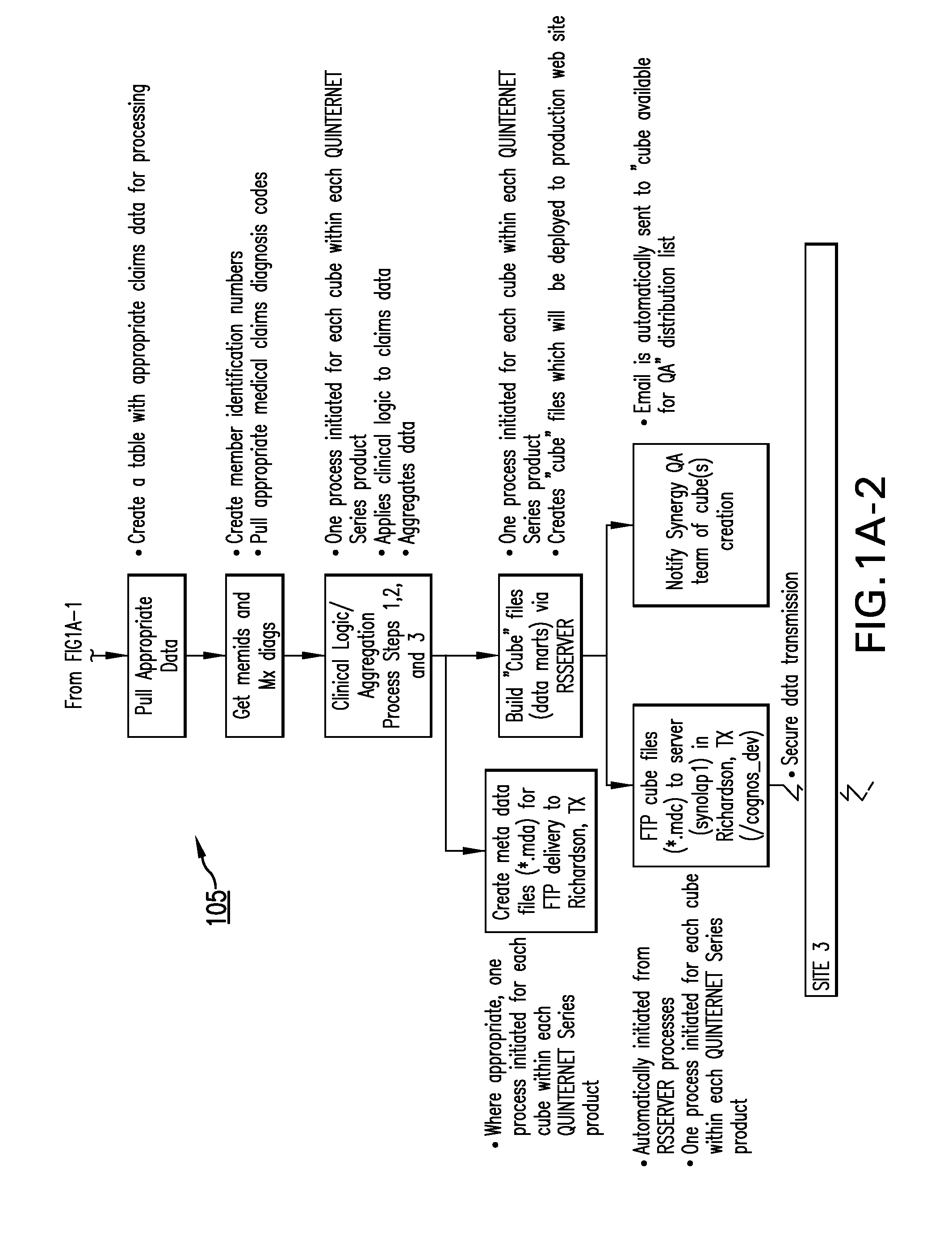System and method for generating de-identified health care data
a health care data and data system technology, applied in the field of computer systems and databases, can solve the problems of insufficient data format for efficient search, retrieval and analysis of specific attributes, and claims data cannot be transmitted from the clearinghouse to others in raw form with personal data, so as to improve sales force targeting and accurate intelligence on market size and demand.
- Summary
- Abstract
- Description
- Claims
- Application Information
AI Technical Summary
Benefits of technology
Problems solved by technology
Method used
Image
Examples
Embodiment Construction
[0029] With reference to the drawings, in which like numerals represent like elements throughout, FIGS. 1A, 1B and 2 illustrate a high-level combined block / flow diagram for the present invention. These figures represent both the elements of a block diagram for, as well as the steps performed by the system of, the present invention.
[0030] Referring to FIGS. 1A, 1B and 2, the primary processing that takes place in the present invention may be performed by, for example, a high-performance computing system, such as a Sun Microsystems ES10000 computer (at SITE 2). On a periodic basis, such as each day, seven days per week, a computing system at SITE 1 places healthcare claims data at step 103 via a secure connection 190 onto a computer system at SITE 1. This healthcare claims data may include, for example, pharmaceutical, medical, and hospital claims 101 that have been “de-identified” at step 102 (explained in further detail below).
[0031] The claims data is de-identified at step 102 be...
PUM
 Login to View More
Login to View More Abstract
Description
Claims
Application Information
 Login to View More
Login to View More - R&D
- Intellectual Property
- Life Sciences
- Materials
- Tech Scout
- Unparalleled Data Quality
- Higher Quality Content
- 60% Fewer Hallucinations
Browse by: Latest US Patents, China's latest patents, Technical Efficacy Thesaurus, Application Domain, Technology Topic, Popular Technical Reports.
© 2025 PatSnap. All rights reserved.Legal|Privacy policy|Modern Slavery Act Transparency Statement|Sitemap|About US| Contact US: help@patsnap.com



